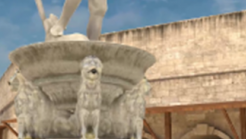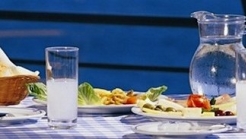

Greece
1600 B.C. Spring festival Guests proceed to the theatre of the palace to honour the Great Mother, Goddess Nature. The guide informs the guests about the proceedings. Everybody is excited about what will follow. The high-priestess enters the stage. She is burning incense from aromatic herbs of the
1600 B.C. Spring festival
Guests proceed to the theatre of the palace to honour the Great Mother, Goddess Nature.
The guide informs the guests about the proceedings. Every body is excited about what will follow.
The high-priestess enters the stage. She is burning incense from aromatic herbs of the Cretan land. Offerings are given to the personification of Goddess Nature, the olive tree (treeworship).
offerings follow, gifts of the Cretan Earth. Carobes, nuts, pines, fruit etc.
The Minoan ladies dance to hnour the Goddess along with the men. Their union, a symbol og equality and love in honour of the Great Mother.
The games will begin. Strength, stamina and intelligence will surface through the bull games, surviving the fatal risks of the game with the sacred bull.
The high priestess embraces the Minotaur in a ritual dance.


Virtual tour: What was Candia (Heraklio) like in 1640? The video shows Candia from Rocca a mare, Rouga Maistra, Agios Titos, the square of Sitira and the fountain of Morosini, the Volton Gate, the temples and monasteries of St. Francis,


In Greek culture, food is so much more than sustenance – it’s about culture, comfort, family and life itself.


The Numismatic museum has always encouraged, and still does, the creation of new training programmes looking to make to the younger people knoen the importance of museums in society.
1039 Ε 6061 01515 00